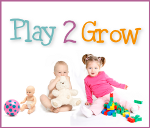I asked my contacts about the issues of poverty and cultural diversity in their countries. Sherry told me that in Australia, generally four year old kinder is funded for low income families especially those who are receiving government assistance. For children who are at risk or from aboriginal backgrounds have three year kinder funded as well. In Northern Ireland, children are entitled to one year of free preschool either in a nursery class like Kierna’s or in a play group. The nursery class has one qualified teacher and one assistant where the play group may have one leader with a degree and two assistants with nursery training. Children go five days per week and the hours range from 2.5 to 5. Children who are socially disadvantaged get priority for places and then children get in by their birthdates. In Kierna’s class, out of 26 places, six or seven are usually for low income children. These children also get their lunches provided. For younger children who need day care, low income parents can get vouchers to offset the cost. The UK also has a program called, Sure Start that works with low income families. One of their programs is called, “Time to be Me” which teaches children play skills and the parents stay in the classroom with them one day per week. Kierna said she noticed that the children who attend this program are ahead. They already know simple rhymes and songs when they get to her classroom.

As for cultural diversity, it is still relatively new to Northern Ireland. Recently, there have been a lot of migrant workers from Poland, Lithuania, Latvia and Portugal. About 10% of children in Kierna’s program speak English as a second language. Funding is available to help these children when they reach age four and are in formal schooling, but not when they are in Kierna’s class. They have a teacher who will work with them in small groups to teach them words and phrases in English.
Sherry and Donna in Australia have had similar experiences. They have worked with very few children from other countries or cultures. When they did work with children from other cultures, they’d play simple games to get the child involve and invite parents to observe the program. Some of the preschools they’ve visited are more diverse. They’ve seen things like welcome notice boards in different languages, display boards that the families have contributed to explaining their customs, also dolls, toys, books, materials, musical instruments, posters, props from all around the world, cooking and games from other countries, and so on. Sherry found a video to a hello song. This is similar to songs they’ve used to expose children to different languages and to make children who speak different languages to feel welcome.


No comments:
Post a Comment
Thank you for your comments! I read them all and I appreciate each one. I often reply to comments so feel free to check back for a response.